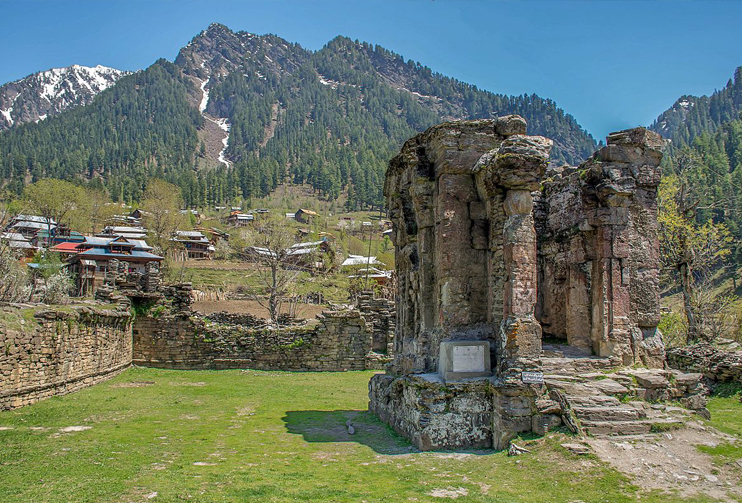Neelum

Show Map
Sharda Peeth
It was the center of great Sanskrit scholars and Kashmiri Pandits and was a famous center of Hinduism. A famous historian Pandit Kalhana mentioned it as a center of learning in ancient Kashmir now referred to as “Sharda Peeth”. The earliest reference to the Sharda temple comes from the Nilmat Purana, it describes the confluence of two holy streams where Sharada Peeth is located. It was among the most prominent university in the Subcontinent known in particular for its library. Sharada Temple was without any roof structure since 1870 when Charles Bates visited the site, he mentioned that top of the temple had been covered with temporary material for its protection (Bates 1870). In 1892 when the site was visited by Sir Mark Aurel Stein. A
According to him the temple had a roof of wooden planks. Stein narrates in his paper that Pandit Kalhana (a famous Historian) personally visited Sharda in the year 1030 CE. Al Beruni compared the Sharada temple with the Multan Sun temple,Vishnu Chakra Swamin Temple at Thaneshwar and Sarnath temple in Gujrat(Muzaffer Ahmed 2019).
Muzaffarabad
Sharda Peeth



Sharda fort


Sharda fort
The fort was constructed during Dogra period in 19th century on ancient settlements. The fort along with watch towers built on a strategically important location as a track from Kashmir to Chilas. In the past fort was a complex of barracks and a small garrison consisting over a few dozen soldiers with an officer was deployed there (Bates, 1873). According to Sir Mark Aurel Stein. A square rubble-built structure which stands almost opposite to the temple, on the left bank of Madhumuti, was erected in Maharaja Gulab Singh’s time to guard the valley against the inroads of marauding Chilasis who in the Sargan valley had a convenient route to descend by. As quoted by Stein 1900, during his visit to Kashmir “he found a small garrison of Dogras and some forty men belonging to irregular Khaildar troops (TIAC, 2016).



